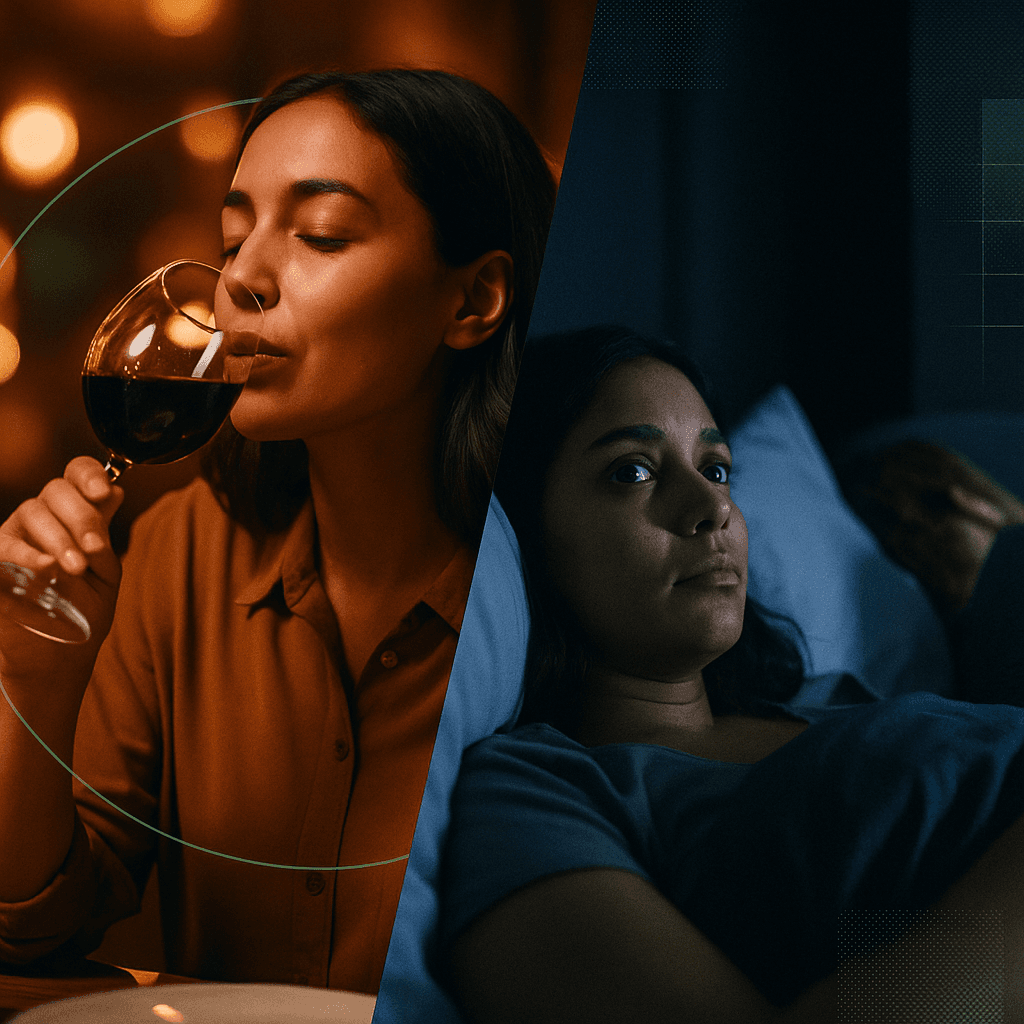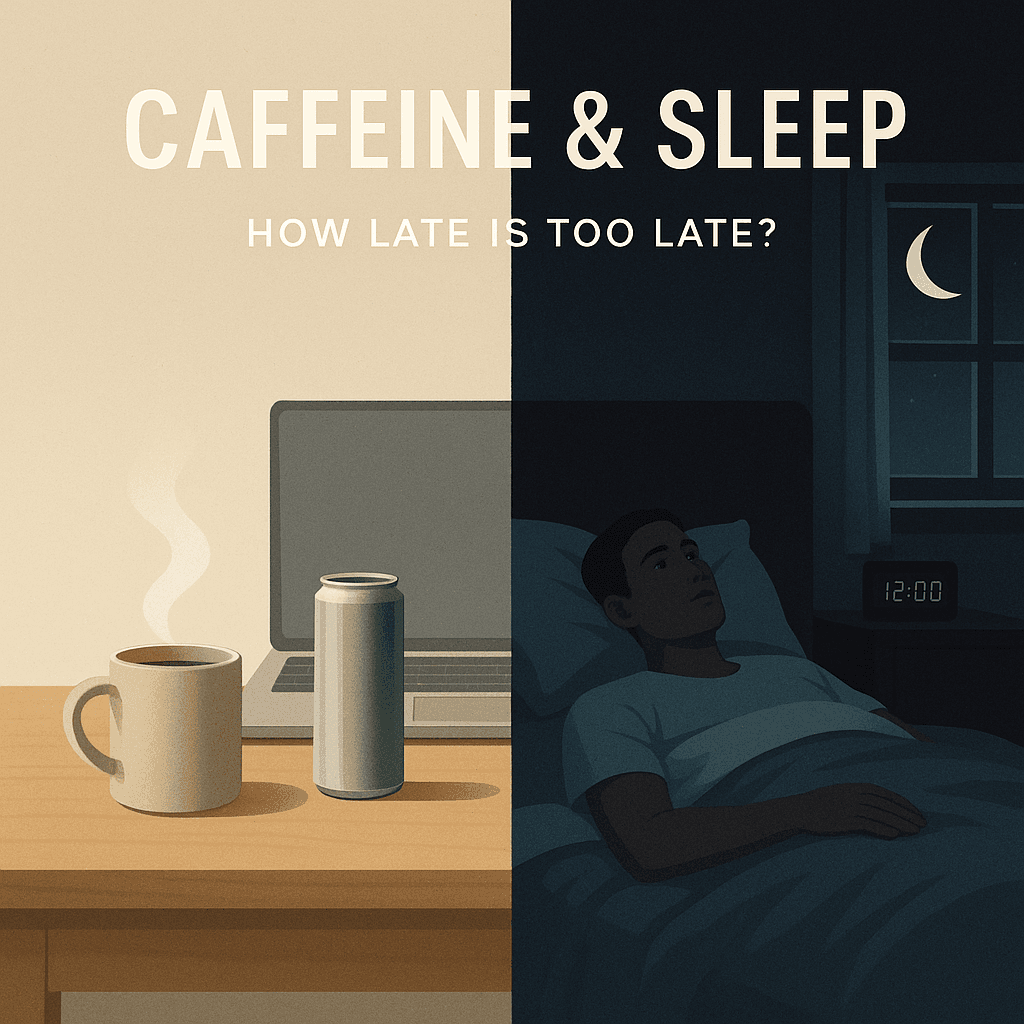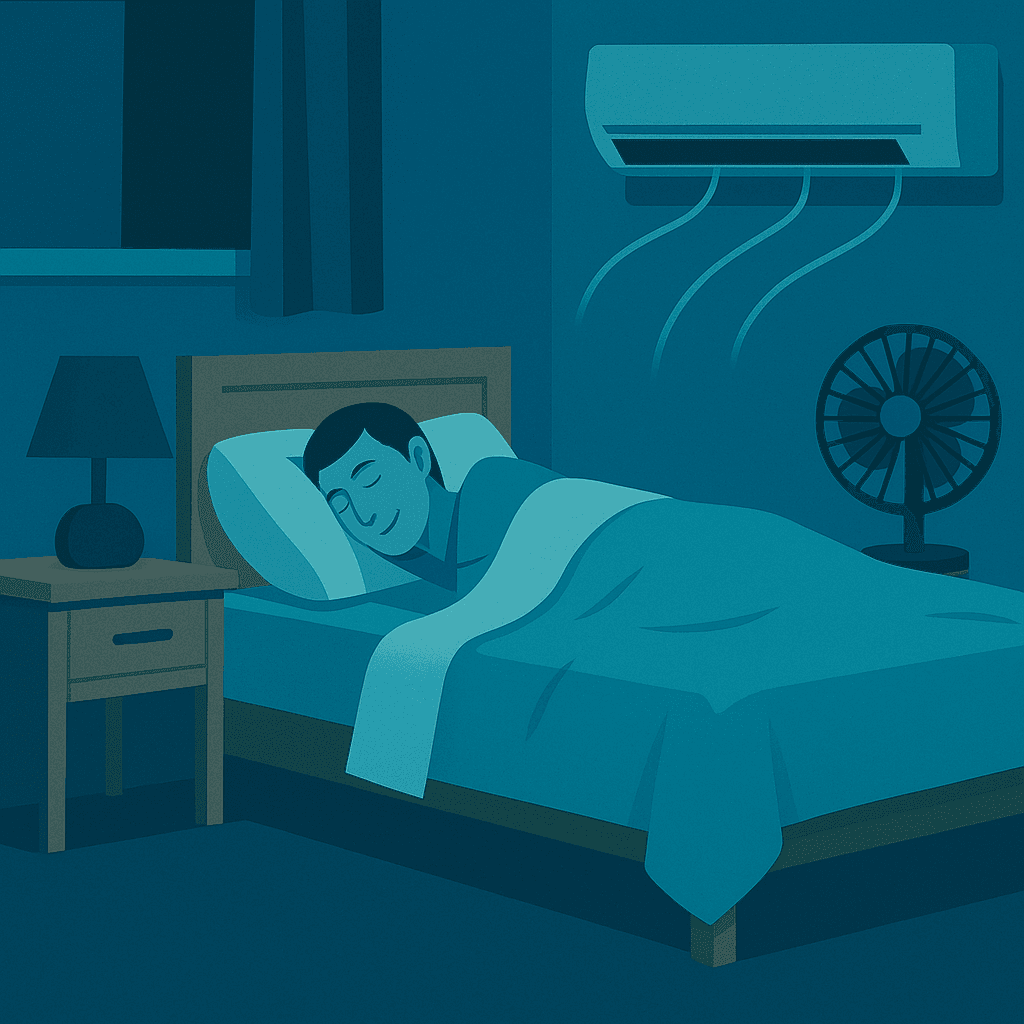Alcohol and Sleep: Why Nightcaps Backfire

It’s 11 p.m. and the day still hums in your head. You rinse a glass, pour something amber, and watch the surface settle as if calm could be decanted. Ten minutes later your eyelids feel heavy, and the edges of thought go soft. If sleep were a door, alcohol seems to find the handle and turn it.
The next part is familiar too: the middle-of-the-night stare at the ceiling, the flip to the cool side of the pillow, the sense that you’re drifting but never quite arriving. Morning brings the puzzle—“I slept,” you tell yourself, “so why do I feel like this?”
The short answer is that alcohol edits the film of your night. It fast-forwards the opening scenes, cuts out key sequences in the middle, and skips frames at the end. The performance still runs, but out of order and out of tune. What follows is a guided tour—neurochemistry in plain language, sleep architecture translated into human experience—so you can decide how to drink without dismantling your sleep.
TL;DR (for the scanner)
- Alcohol can knock you out faster (sedation) but reduces first-half REM and fragments the second half.
- Practical rule: finish 3–4 hours before bed; aim for 1–2 standard drinks max on “sleep matters” nights.
- If you snore or suspect apnea, alcohol amplifies breathing events—be stricter with timing/dose.
- Feeling “fine” ≠ sleeping well: lab recordings show hidden architecture loss even when time in bed looks okay.
The Sedation Illusion: Falling Asleep Faster, but Not Better
Alcohol is a pharmacological two-step: it presses the brain’s brake and eases off the gas simultaneously. Neurologically, that looks like boosting GABA—the principal inhibitory neurotransmitter—while dampening glutamate, a key excitatory signal. Layered on top is adenosine, the molecule that builds “sleep pressure” through the day. A drink or two nudges adenosine upward, which is one reason a nightcap feels like permission to doze.
In practice, this cocktail can shorten sleep latency from ~15–20 minutes to closer to ten or less, especially after higher doses. That’s the part most people notice: unconsciousness arrives on cue.
But sedation isn’t sleep. Sedation is the neurological equivalent of fast-forwarding through the first stretch of the movie. You arrive at the next scene faster, but you haven’t watched the story unfold the way your brain expects.
What natural sleep onset normally does
In a normal descent to sleep, cortical arousal eases in waves; core temperature dips; vagal tone rises as heart rate slows; metabolism tilts toward repair. Alcohol bulldozes that choreography—pushing GABA up and glutamate down, then artificially elevating adenosine. Yes, you “go out,” but you skip the timing cues that set up stable slow-wave sleep and later REM. The skipped prelude is why the second half of an alcohol night rarely holds together.
REM, Memory, and the Editor Who Cuts the Best Scenes
Beyond dreams, REM sleep is a nightly lab for emotional processing and memory integration, where the brain replays, tags, and links experiences to what you already know. Across a typical night, REM grows richer in the second half.
Alcohol consistently suppresses REM in the first half—often by a third or more at higher intake. People often swear they “slept fine,” but EEG shows cycles that should include generous REM are thinned out or replaced by lighter non-REM. The emotional scenes, the plot points that hold the story together, are missing.
Later, as the sedative fades, the brain tries to pay back the debt. REM rebound intrudes more abruptly and sometimes excessively—cue vivid or disjointed dreams and a churned feeling near dawn.
If REM is the editor that gives the night meaning, alcohol is the editor who cuts the best scenes in the first act, then tries to cram them back into the finale. You watch the climax out of order.
Why REM loss changes tomorrow
When REM is trimmed, emotion regulation and associative memory underperform the next day. Tasks that ask you to connect new input with what you know—names with faces, patterns with rules—suffer. Emotional tone skews brittle because yesterday’s experiences weren’t fully “de-tagged” in REM. In experiments pairing evening alcohol with learning tasks, people consolidate less, even when total time in bed looks fine.
Fragmentation, Metabolism, and the Night That Breaks Apart
As alcohol is metabolized—roughly a drink an hour, with wide variation—the sedative pressure eases. Biology rarely snaps back to baseline cleanly; you get a rebound of arousal. Sympathetic tone drifts up, heart rate stays higher than it should, and micro-awakenings multiply.
That shows up as WASO (wake after sleep onset) rising and sleep efficiency falling—especially in the second half of the night, precisely when the brain prefers reliable REM. That’s the 2–3 a.m. window where sleep feels slippery: you doze, you surface, you chase it again.
Dose × timing (quick map)
- 1 drink, ≥4h pre-bed: Usually minimal impact; light REM dip possible.
- 2 drinks, ≥3–4h pre-bed: Faster onset; mild first-half REM suppression; second half near baseline if finished early.
- 2–3 drinks, ≤2h pre-bed: Moderate first-half REM suppression; more awakenings later; morning grogginess.
- 3+ drinks, ≤1h pre-bed: 30–50% REM reduction early; marked fragmentation later; elevated overnight heart rate.
Breathing, Snoring, and Why the Airway Sags
Alcohol relaxes skeletal muscle, including the upper airway muscles that keep the throat open in sleep. If you already snore, you’ll snore louder; if you sometimes snore, you may start. For those with vulnerable airways, alcohol helps tip the night toward obstructive sleep apnea (OSA)—repeated narrowing or collapse that fragments sleep and dings oxygen.
Across population studies, alcohol use is associated with a ~25–33% higher risk of OSA. In people with borderline apnea, a few drinks can yield dozens of partial collapses. Each event spikes heart rate and disrupts continuity. If our metaphor holds, this is the projector jamming—the reel stutters; your nervous system flips the lights on to rescue airflow.
Who should be stricter with timing and dose
- You snore or have suspected/diagnosed sleep apnea
- You see higher overnight heart rate / lower HRV after drinking
- You’re in a recovery window (training, injury, illness)
- You have next-day cognitive/emotional load (presentations, caregiving)
- You notice 2–3 a.m. awakenings or vivid dreams on drink nights
The Morning After: What “I Slept” Doesn’t Show
By morning, the ethanol is gone, but its edits remain. Alcohol nights come with less slow-wave sleep—the deep stages where growth hormone pulses and immune signaling calibrates—and less continuous REM. They also carry more autonomic activation: higher average heart rate in the first half and a delayed return to parasympathetic dominance.
Subjectively, that looks like irritability, reduced working memory, slower reaction time, and mood that skews brittle. It’s not just dehydration; it’s a night where the film ran out of sequence and the projector kept jumping in its mount.
Late-night damage control (if it happens)
- Hydrate (water + electrolytes) earlier in the evening; avoid chugging at bedtime.
- Keep the room cool & dark; cut awakenings triggers.
- No screens in bed; avoid dopamine re-arousal.
- Morning light + a short walk the next day; skip long naps (>20–30 min).
- Resume early cutoff the following evening; don’t stack late nights.
How Much and How Late: Drinking Without Dismantling Your Night
You don’t have to choose between never drinking and never sleeping well. You do need a few guardrails that reflect what the data show.
Finish alcohol at least 3–4 hours before bed. If lights-out is 10:30 p.m., aim for your last sip around 6:30–7:30 p.m. You’re giving the liver room to work before the first cycle begins, which reduces first-half REM suppression and second-half fragmentation.
Keep to one or two “standard drinks” on recovery-sensitive nights. In U.S. terms, a standard drink equals 14 g pure alcohol—about 12 oz beer (5%), 5 oz wine (12%), or 1.5 oz spirits (40%). The label changes; the ethanol dose doesn’t.
Standard drinks (practical reality check)
| Beverage | Typical Serving | Typical ABV | Pure Alcohol | “Standard Drinks” |
|---|---|---|---|---|
| Beer (regular) | 12 oz (355 ml) | 5% | 14 g (0.6 fl oz) | 1.0 |
| Craft beer | 16 oz (473 ml) | 7% | ~26 g | ~1.6 |
| Wine | 5 oz (148 ml) | 12% | 14 g | 1.0 |
| “Heavy pour” wine | 9 oz (266 ml) | 14% | ~30 g | ~2.1–2.5 |
| Spirits (neat) | 1.5 oz (44 ml) | 40% | 14 g | 1.0 |
| Cocktail (common) | ~3 oz total spirits | 40% | 28 g | 2.0+ |
Cutoff calculator (quick math)
- Cutoff = Bedtime − (3 to 4 hours)
- Example: 10:30 p.m. lights-out → last drink by 6:30–7:30 p.m.
- Serving math: If your last drink is >1 standard, shift cutoff earlier by ~30–60 min.
Myths vs. Facts (fast busts)
| Myth | Fact |
|---|---|
| “Alcohol helps me sleep.” | It helps you fall asleep, but reduces REM early and fragments the second half. |
| “If I slept 8 hours, I’m fine.” | Architecture matters: many people lose deep/REM after drinking even with 8h in bed. |
| “I don’t snore, so I’m safe.” | Alcohol relaxes the airway; even non-snorers can see event spikes. |
| “Hydration fixes it.” | Water eases hangover symptoms, but doesn’t restore lost REM or fix fragmentation. |
Signs alcohol is disrupting your sleep
- 2–3 a.m. awakenings on drink nights
- Vivid / chaotic dreams late night
- Higher overnight heart rate vs. alcohol-free nights
- Groggy mood or irritability, despite “8 hours”
- Partner notes louder snoring or gasps
The Bottom Line (and a Better Ending)
Alcohol may quicken your slide into unconsciousness, but it doesn’t deliver the performance your brain rehearses each night—the deep, coordinated dance of slow-wave repair and REM integration. Taken late, it cuts the film out of order: the opener is skipped, the emotional core is missing, the finale stutters.
If you want the ending to land, last call should be well before lights-out. Keep the dose modest, finish early, and let the projector hum. The story will make sense in the morning.
RELATED TOPICS
POPULAR IN BETTER SLEEP SOLUTIONS

Caffeine & Sleep: How Late Is Too Late? (2025 Guide)
Caffeine’s half-life, timing rules of thumb, and how to set a personal cutoff so you sleep on time—without giving up coffee.

Sleep Disorders and Challenges
Understand insomnia, sleep apnea, restless legs, nightmares, and jet lag, plus practical next steps.

Why You Get Hot When You Sleep (and What to Do About It)
Why nights feel hot: your circadian rhythm, REM sleep quirks, and the bed microclimate. Fixes for cooler, deeper sleep.